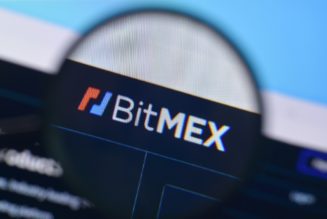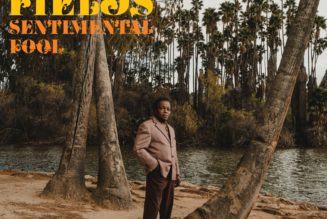
On Oct. 1, 1982, in Japan, when Billy Joel‘s 52nd Street became the first-ever CD to go on sale, two electronics giants had been pushing for years to switch from the beloved vinyl LP to the shiny new digital-optical disc. Sony in Japan and Philips in Eindhoven, Netherlands, had invented the compact-disc hardware, and they were aggressively lobbying the world’s biggest labels to provide the software – music – to go with it.
Up to that point, the labels wouldn’t cooperate – not even CBS Records, Sony’s longtime partner for years before the electronics company bought it outright in 1987. “If there would have been rotten eggs available, they would have thrown them at me,” recalls Jan Timmer, then head of Philips Worldwide, of an Athens, Greece, music-industry conference where he attempted to introduce the new format to a roomful of defensive record executives. One was Jerry Moss, head of A&M Records, who pounded his fist on a table. Back then, skeptical label salespeople called the CD “Jerry Shulman‘s Frisbee,” a reference to CBS’ market-research director, the label’s top CD evangelist.
Over time, the execs wore down thanks to a sustained charm initiative from Sony-Philips bigwigs, plus a scrappy coalition of label marketers working with MTV, radio stations and even CD-friendly stars such as Stevie Wonder. The disc kicked in by the late ’80s, delivering a boom that continued until the internet, MP3s and Napster nearly killed it off by the mid-2000s. (Using similar technology, DVD and even CD-ROM and digital storage became standards in their own industries.) Today, CDs are mostly relics, confined to audiophile collections and concert merch — although some retailers see early signs of a vinyl-like comeback. Here’s an oral history of the introduction of the CD:
The Early Days
Michael “Mickey” Schulhof, former president of Sony Corp.’s U.S. division: When I listened to the first digital-audio recordings in Tokyo, I loved it. There was no surface hiss. You could access any of the tracks — something you could not easily do with a cassette or an LP. Sony asked me to be the liaison and the negotiator between Sony and Philips.
Herbie Hancock, jazz musician: There’s a record called The Piano that I recorded in Japan. It was one of the first direct-to-disc recordings. Yasohachi Itoh was the production coordinator. Months later, he was able to give me a copy of that CD. I think they made a few of them at the time. The sampling rate wasn’t 44.1, which is the standard for CDs. So I had this CD, and I had no device that could actually play it.
Jerry Shulman: The Saturday Night Fever [soundtrack] was such a monster hit that millions and millions of records were sent out. And in ’79, the unsold records were starting to come back. That’s when major layoffs were taking place.
Jan Timmer: I was transferred from Philips South Africa to run PolyGram [the major label owned by Philips], and it was a company in deep trouble. The whole record industry was in dire straits at that time. When I saw this CD, I saw this as the savior: “This is going to help the industry to make a comeback.”
The Label Pushback
Timmer: I remember the conference in Athens [in 1981]. We had one player and a couple of discs, and I came full of enthusiasm to tell my newly acquired colleagues that this was the future. [Laughs.] The reception couldn’t have been more hostile.
Schulhof: The music industry said, “It’s nice, but so what?”
Timmer: Walter Yetnikoff [then head of CBS] was the most vocal opponent. It was most peculiar, because in the room was also Norio Ohga, the vice president of Sony, who had a joint venture with CBS in Japan. And he knew how much Walter Yetnikoff was opposed. So Ohga preferred to stay in the back of the room and let me take the flak.
Marc Finer, former Sony Corp. product communications director: I was brought into a meeting with a handful of other people, and shown, by Michael Schulhof, a prototype of this very tiny optical disc. He announced we were going to be part of the team to introduce it in the U.S.
Alan Perper, former WEA new product marketing director: Stan Cornyn was a Warner Bros. executive in charge of new technology. He said, “In addition to everything else you’re doing, I want you to be involved in the launch of this thing.”
John Briesch, former president of Sony Electronics’ consumer products group: We had to talk to the executives, from Walter Yetnikoff at CBS to Clive Davis, for almost two years. We came in and said, “OK, we have this new idea. Instead of these vinyl records that you make really cheap, you have to make these CDs and they have to be in a dust-free environment with people in Hazmat suits. And, by the way, you’re going to have to charge more for it, and we can’t tell you how many people are going to have a machine to play your disc on for a few years.” The record companies were, pretty much, “No way, kid.”
The Changing of the Bins
Shulman: Packaging was a big issue. It was an expensive item, and retailers didn’t want it to be stolen. They had 12 x 12 fixtures to hold LPs. That’s what gave me the notion to have the CD package in a 6 x 12 format [an oblong cardboard box later known as the longbox], so they could put two packages side by side in an LP bin.
Briesch: We had to convince the merchants to change their displays.
Bob Sherwood, former senior vp of marketing, CBS Records: We were dealing with the crossover from 8-track to cassette, and, of course, the endearing and wonderful LP. To have this new thing come along — we had retailers who didn’t want to deal with it because it would require new shelf space.
Schulhof: People like [record chain] Sam Goody had questions: “How could you possibly merchandise something in a plastic container 5.25 inches on a side, with no album graphics?”
The CD Group
Finer: John [Briesch] was talking to his colleagues at PolyGram, including Emiel Petrone [who died in 2004]. They established the Compact Disc Group. It was the first time ever, in the modern era, where you had so many [record] companies working together for a common goal.
Shulman: There was tremendous pushback. The manufacturing people did not want to change from the LP. The salespeople said, “Are you crazy? We’re selling $10 LPs of Michael Jackson. What makes you think people are going to want to spend $25?” I said, “Look, this is like a hardcover book compared to a softcover book. This is a way for us to sell another copy of Bridge Over Troubled Water.”
Finer: It was at one of the offices of Warner Elektra Atlantic in New York when we first demonstrated this. I was prepared for questions about “How does digital sound when it’s played back?” and “How reliable is the recording?” And the presentation commenced with opening the drawer, playing the disc in the player, and the drawer would close. And out of silence, music filled the room. And that’s what blew their minds.
Timmer: We owned three labels: Philips Classics, Deutsche Grammophon and Decca. We owned the largest classical catalog in the world. I was very lucky in that the great maestro Herbert von Karajan agreed with me and he became a big promoter. And that’s how the CD ball started rolling.
Briesch: The founders of [indie label] Telarc were also classical recording engineers. We started off with 16 discs — that’s all we had, from Philips, CBS and Telarc.
The Artists
Schulhof: I made the recommendation that we stop trying to convince the record-company executives and go straight to the artists. Stevie Wonder was one of the very first. He loved the concept of digital audio. Adopted it very fast.
Hancock: We could record a lot of things on this little disc. And the fidelity was cleaner and clearer. There were a lot of positive things to it. I liked the way it sounded. I could hear more components of the music. What I was hearing — that extra bit, pun intended — overshadowed the failings of it.
Briesch: We wound up talking to [producer] Phil Ramone. He was into technology and digital audio. He started to go around to his counterparts and convince them that they should be working with their artists to promote the establishment of compact disc and digital audio. Phil was working with Billy Joel, and he got Billy to tell CBS Records he was OK to have 52nd Street as the first CD. We released it in Japan.
Sherwood: I’m going to be one of the few people who will openly acknowledge to you that I didn’t get it. I used to throw Jerry Shulman out of my office, because he was driving me crazy. But I went to this classical store, there was a rack of CDs and I watched these people going for everything from Johnny Cash to Tchaikovsky if it was in the CD format. And I thought, “Uh-oh, we’re blowing something here.”
Timmer: Emiel Petrone and I went to the Tower Records on Sunset Boulevard in Los Angeles. We took newspapers so people weren’t suspicious, and we listened to conversation with the first adopters of the compact disc. They took one of each. I said to Emiel, “We are going to make it.”
The Yetnikoff Transformation
Briesch: [Walter] was a very tough executive who screamed and yelled most of the time and was demanding that we would incentivize him, as well as CBS, to get him to agree to the format. You can’t use the words in your article, what he used to tell us.
Schulhof: What ultimately changed his mind, the artists told him, “This is really great, Walter, you can’t miss out on this.”
Briesch: We started to get his talent to request it. Barbra Streisand starts to talk about it, the jazz artists start to talk about it. They say, “Gee, I sound a lot better than I do on vinyl.”
Schulhof: Walter was extremely smart. Instead of $12.99, which was the list price for an LP, he made it $15.99 for a compact disc. He said, “I’m going to tell the artists this is new technology. We’re taking a risk. We don’t know how this is going to turn out.” What Walter did not tell people was he made sure artists all signed amendments to their contracts to allow the issuance on compact disc — but he also made sure the royalty payments to the artists remained the same that they were on an LP. It meant the royalty rate was lower. The artists didn’t complain: “I’m getting the same money.” It was only years later, when the sales for the CDs started to become significant, and the artists began to realize their royalty rate had dropped, that they complained. And it was fixed.
Sherwood: When Walter got behind it, we got suddenly behind it. He got really hot for the CD, and word got down fast.
The Factory
Schulhof: We needed to build a factory in the U.S. Walter didn’t like factories. They weren’t what he gravitated to. Even before the acquisition of CBS Records, Sony purchased, from CBS, their compact cassette factory in Terre Haute, Indiana. [Earlier this year, the factory, Sony DADC, laid off 100 workers and moved many operations to Austria.]
Briesch: It was agreed we would manufacture the discs not only for CBS, but for anybody — we could do it for Warner, Telarc. Then my assignment changed, to getting orders for the CD factory to be able to license some of the smaller labels, then get the bigger labels to understand how to get their material over there.
Schulhof: The Billy Joel disc was actually shipped in from Japan because we couldn’t make them in the U.S. We didn’t have a factory here. We fixed that. The very first disc made in the U.S.A. was, in fact, Born in the U.S.A., by Bruce Springsteen.
Tony Van Veen, CEO of Disc Makers: We brokered with Sony for years, until we were doing 20 million discs a year by the time we finally put in our own factory. That was in 2000.
The Product Marketing
Terry Currier, owner of Music Millennium, record store in Portland, Oregon: I remember ordering the first box of CDs, which came from Sony. You got a pre-pack, and in order to get the hot record inside, which was Michael Jackson, you got all kinds of other titles, including classical titles.
Finer: We placed CD players in Top 45 [radio] markets, on both AOR and classical stations, and provided new titles for a year or more. All they had to do was tell their listeners, “You’re listening to this recording on compact disc.” We put together events at clubs around the country: “A Date With Digital.” We promoted mostly pop and rock to get people.
Briesch: Bob Pittman was at MTV back in the early ’80s. We said, “You guys need something really high-tech to make your Moonman thing work.” We said, “Compact disc is the high-tech solution to music,” and Pittman, a very smart guy, agreed.
Finer: We did a promotion at spring break, this incredible Compact Disc Hunt. You’re looking at not just the extracurricular activities that go on at a place like Daytona Beach, but people wide-eyed at something they’d never seen or heard before, this very shiny, tiny optical disc.
Perper: That almost got us thrown in jail. We were hiding discs at different places around the beach. We gave the kids a clue, the first three words of a song. We turned these thousands of kids loose to find a disc with a logo, and if they found the disc, we gave them a free set of CDs. The next people who came into the tent were the police, who told us, if we continue to do this promotion, they would send us to jail. The kids were flipping over cars, tearing down people’s tents.
The Boom
Van Veen: The introduction was 1982 — that was the first release. But it took a number of years for major artists to start having enough catalog, for consumers to start buying CD players. They started out really expensive, and then dropped to $500, $300.
Schulhof: From the introduction of the CD in ’82, until CDs represented 20% of the business, it took almost a decade. Then it started to accelerate wildly.
Hancock: They sold like wildfire and they got better and better.
Finer: Around 1987, when CDs surpassed the LP in volume and revenue — from that point, there was no looking back. For the next eight to 10 years, it was sales increases every year. It drove a demand that nobody anticipated. CD created the catalog business.
Van Veen: Our company revenues rocketed upwards along with CD revenue.
The Aftermath
Terry Shea, former editor, Audio Times: In the beginning, it was a revelation. Everybody thought this was the most amazing thing to ever happen to recorded music. Then it matured and became the norm, no longer wowing people: “This is the way we listen to music.” When streaming came along, and in the early years of Napster, it went from a revelation to boring complacency.
Briesch: I took over marketing for all Sony consumer-electronic products in 1989. We had DVD, and it was the same thing all over again. I got my group to form the DVD Group. Later on, we did the same thing with HD.
Van Veen: The role of CD has gone from primary carrier medium of content [to] more of a souvenir. It becomes a token of, “Hey, I was there, I was at this concert, the artist autographed this for me.”
Currier: CDs are making a comeback. Kids are getting used cars that have CD players in them: “I should get a few things to play in the car.” A lot of young kids think CDs are the cool thing, like younger people in the late 2000s and this last decade thought vinyl was pretty cool. There’s such a supply-chain problem with vinyl. Some things run out, and you don’t see them for eight or 10 months. That’s turning some physical buyers who were buying vinyl into a two-format buyer: “Do I wait, or do I buy the CD?”
Van Veen: The golden-ears analog fringe will probably cringe when I say this, but it’s pretty well known that on CD, the dynamic range – the [difference] between the quietest and the loudest part of the recording – is so much greater than what vinyl can handle. When faced with a choice, I’ll happily buy the CD.
[flexi-common-toolbar] [flexi-form class=”flexi_form_style” title=”Submit to Flexi” name=”my_form” ajax=”true”][flexi-form-tag type=”post_title” class=”fl-input” title=”Title” value=”” required=”true”][flexi-form-tag type=”category” title=”Select category”][flexi-form-tag type=”tag” title=”Insert tag”][flexi-form-tag type=”article” class=”fl-textarea” title=”Description” ][flexi-form-tag type=”file” title=”Select file” required=”true”][flexi-form-tag type=”submit” name=”submit” value=”Submit Now”] [/flexi-form]










Tagged: business, Business news, CDs, entertainment blog, music blog, Oral History, Retail